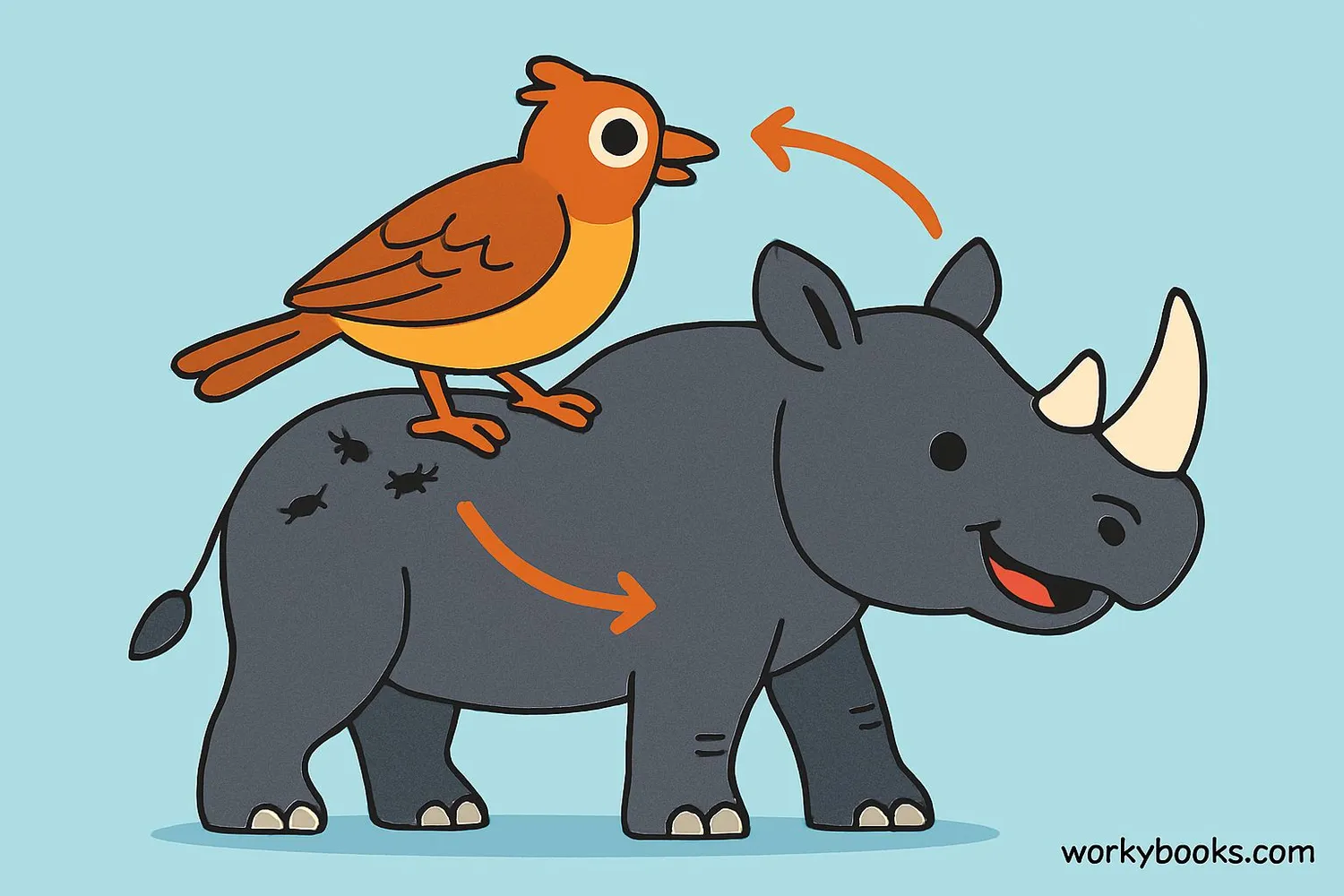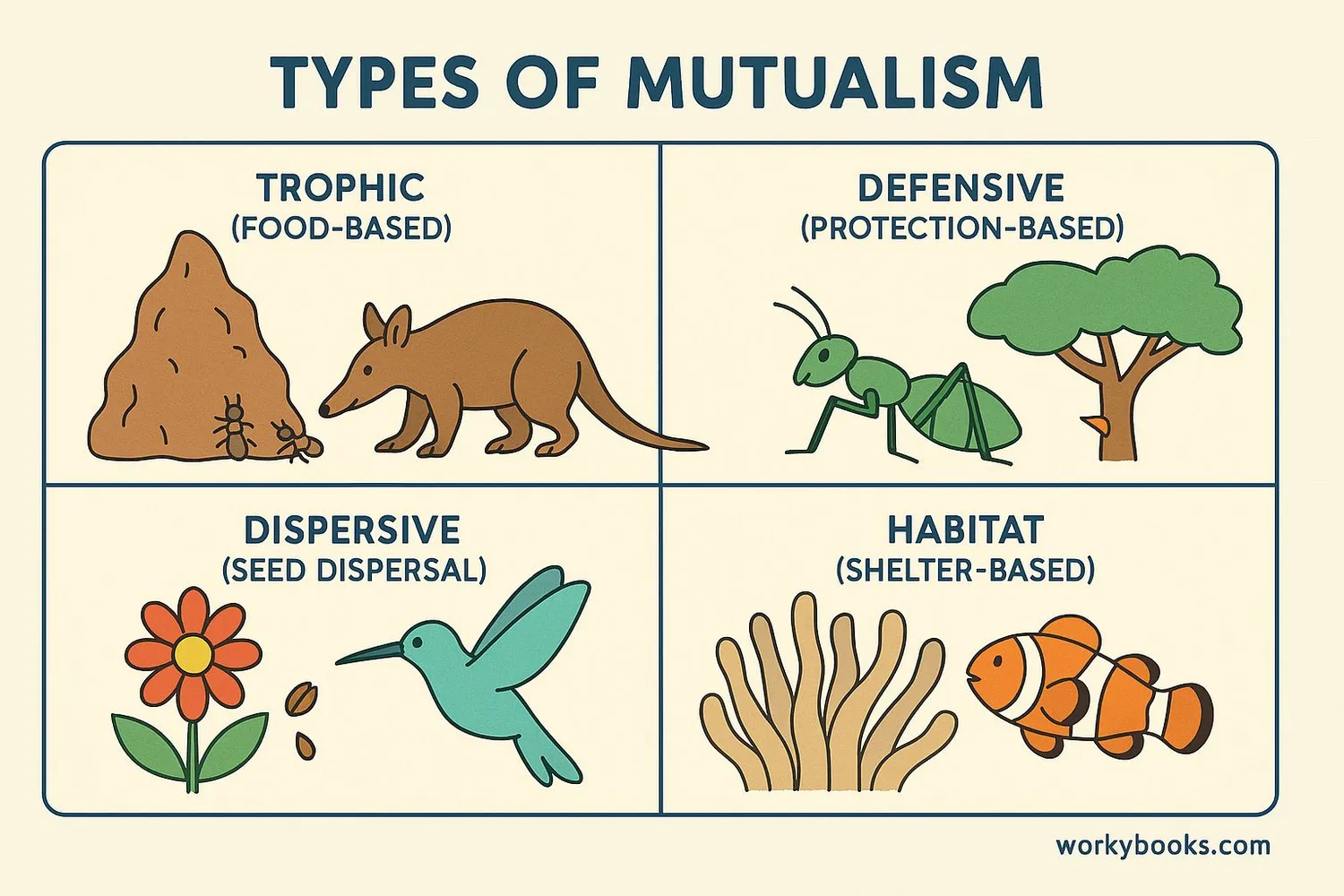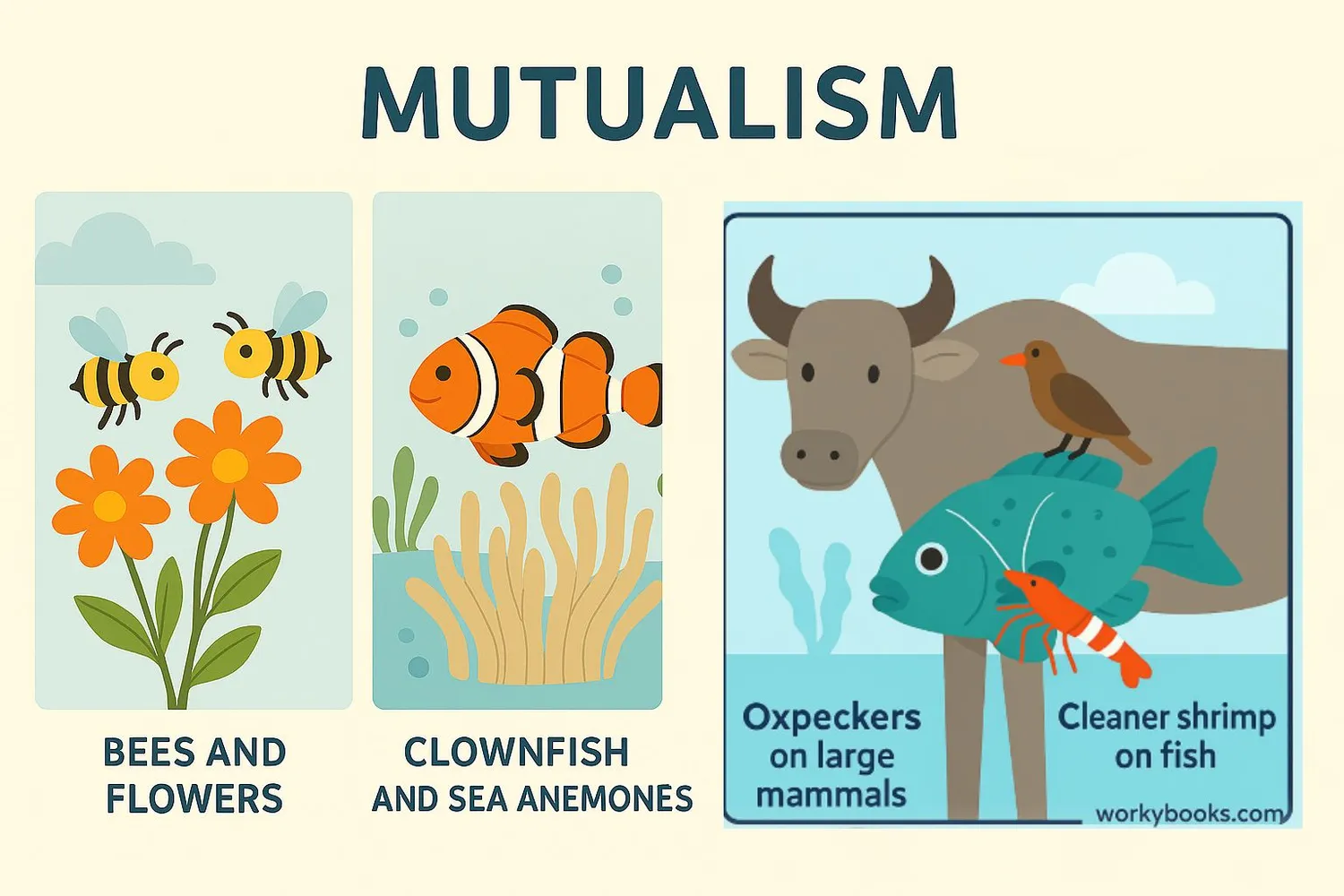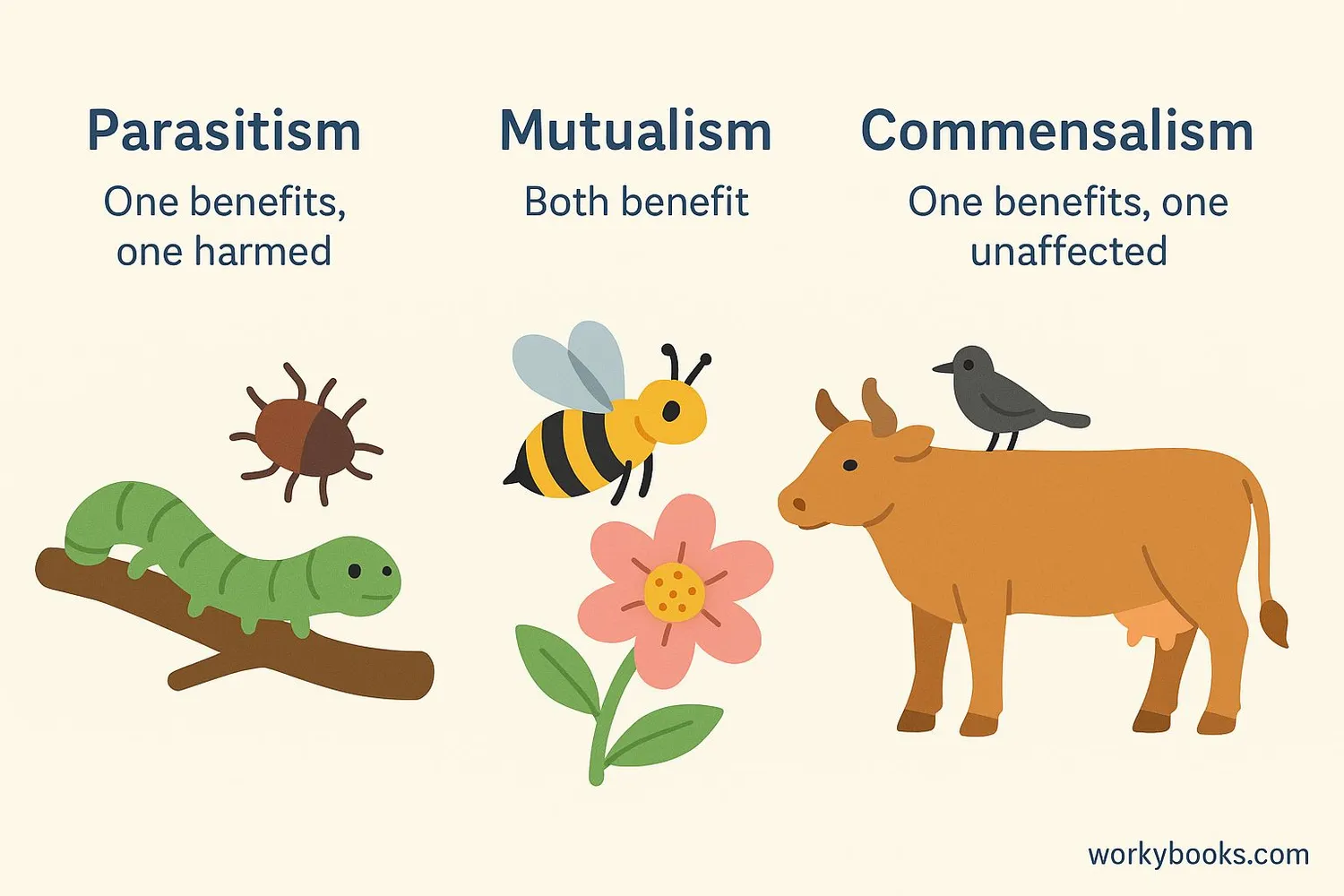Mutualism - Definition, Examples, Quiz, FAQ, Trivia
Discover how different species help each other survive and thrive!
What is Mutualism?

Mutualism is a special relationship between two different species where both benefit from working together. It's like a partnership in nature where each partner gives something and gets something in return.
Think of mutualism as a teamwork arrangement in nature! Different living things help each other to survive, find food, or stay protected. This cooperation helps both species thrive in their environment.
Did You Know?
Mutualism is different from other relationships where only one benefits (commensalism) or one benefits while harming the other (parasitism).
Types of Mutualism

Mutualism comes in different forms depending on what the species exchange. Here are the main types:
Trophic Mutualism
Partners help each other get food or nutrients
Defensive Mutualism
One provides protection, the other provides food or shelter
Dispersive Mutualism
One helps with dispersal, the other provides food
Habitat Mutualism
One provides habitat, the other provides benefits
Nature's Partnerships
Some mutualistic relationships are so close that the species cannot survive without each other. These are called obligate mutualisms.
Examples of Mutualism in Nature

Mutualism is everywhere in nature! Here are some fascinating examples:
Bees and Flowers
Bees get nectar for food while helping flowers pollinate
Clownfish and Anemones
Clownfish get protection, anemones get cleaning and nutrients
Ants and Acacia Trees
Ants get shelter and food, trees get protection from herbivores
Other amazing examples include:
• Cleaner fish and larger fish (cleaning service)
• Oxpecker birds and large mammals (tick removal)
• Fungi and plant roots (nutrient exchange)
• Humans and gut bacteria (digestion help)
These partnerships show how species can work together to survive and thrive in their environments!
Comparing Symbiotic Relationships

Mutualism is one type of symbiotic relationship. Let's compare it with other relationships between species:
| Relationship Type | Species A | Species B | Example |
|---|---|---|---|
| Mutualism | Benefits | Benefits | Bees and flowers |
| Commensalism | Benefits | Unaffected | Barnacles on whales |
| Parasitism | Benefits | Harmed | Ticks on dogs |
Nature's Balance
These different relationships help maintain balance in ecosystems. Mutualism often creates stable, long-term partnerships that benefit entire environments.
Mutualism Quiz
Test your knowledge about mutualism with this quiz! Answer all 5 questions to see how much you've learned.
Frequently Asked Questions
Here are answers to some common questions about mutualism:
Interesting Mutualism Facts
Discover some amazing facts about mutualism in nature!
Ancient Partnership
Some mutualistic relationships are millions of years old. The partnership between figs and fig wasps has existed for over 60 million years!
Special Communication
Cleaner fish and their "clients" have special signals and dances! The client fish signal they want cleaning by posing with open mouths and spread fins.
Insect Farmers
Some ants practice agriculture! They cultivate fungus gardens underground, protecting the fungus from pests while feeding on the fungus.
Coral Partnerships
Coral reefs exist because of mutualism! Tiny algae live inside coral polyps, providing them with food through photosynthesis, while the coral provides protection.





